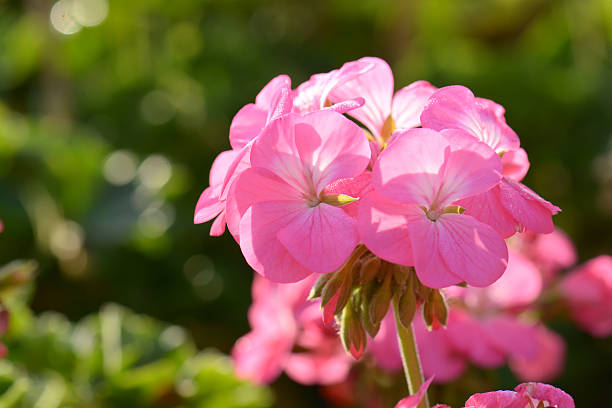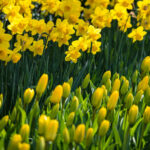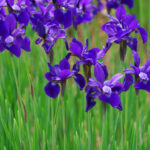Geraniums are some of the most popular and versatile flowering plants in the world, valued for their vibrant colors, easy care, and variety of uses. The name “geranium” often refers to two distinct genera of plants: Geranium, Pelargonium,
In this article, we’ll delve into the history, types, cultivation, care, and uses of geraniums, highlighting why they continue to be one of the most beloved plants for both novice and
A Brief History of Geraniums
The geranium has a rich history that dates back several centuries. Originating primarily from South Africa, Pelargonium species were first introduced to Europe in the 17th century by Dutch traders. These early varieties quickly became popular due to their ability to bloom prolifically and withstand a range of growing conditions. Over time, their popularity spread globally, particularly in temperate and Mediterranean climates where they thrive outdoors year-round.
The name “geranium” itself is derived from the Greek word geranos, meaning crane, because the seed pods of true geraniums resemble a crane’s beak. Today, geraniums are commonly grown across the world, particularly in the United States, Europe, and Australia, and they are a staple in many garden landscapes.
Types of Geraniums
Geraniums can be broadly classified into two categories: true geraniums (Geranium) and Pelargoniums, both of which belong to the family Geraniaceae. Each type has distinct characteristics that make them suitable for different gardening purposes.
1- True Geraniums (Cranesbill)
True geraniums, or cranesbills, are hardy perennials that are native to temperate regions. They are commonly found in gardens, where they are valued for their delicate, five-petaled flowers and finely divided foliage. True geraniums tend to have a sprawling growth habit, making them ideal for ground cover or borders. Some common varieties include:
- Geranium sanguineum (Bloody Cranesbill): Known for its deep pink or magenta flowers, this species is a low-growing plant that thrives in full sun or partial shade.
- Geranium macrorrhizum (Bigroot Geranium): This species has aromatic leaves and pale pink to magenta flowers, and it’s often used as ground cover in woodland gardens.
- Geranium pratense (Meadow Cranesbill): A taller species with blue or purple flowers, ideal for cottage gardens or mixed borders.
Cranesbill geraniums are highly resistant to cold and can survive freezing winters, which makes them a favorite for perennial garden beds in temperate climates.
2- Pelargoniums
Pelargoniums, often referred to as garden geraniums, are more tender plants, typically grown as annuals in colder climates but perennial in warm, frost-free regions. Unlike true geraniums, pelargoniums have larger, more vibrant flowers and a wide range of growth habits, from upright to trailing. There are several popular categories of pelargoniums:
- Zonal Pelargoniums: The most commonly grown type, zonal pelargoniums are distinguished by the dark, circular zone on their leaves. They produce large, rounded clusters of flowers in colors ranging from red, pink, and orange to white and purple.
- Ivy-leaved Pelargoniums: These have trailing stems and glossy, ivy-like leaves, making them ideal for hanging baskets and window boxes. Their smaller, delicate flowers cascade gracefully, creating a dramatic visual effect.
- Regal Pelargoniums: Also known as Martha Washington geraniums, these pelargoniums are prized for their showy, ruffled flowers and striking bicolor or multicolor blooms. They prefer cooler temperatures and tend to bloom best in spring and early summer.
- Scented-leaf Pelargoniums: This group is grown primarily for the fragrance of their leaves, which emit pleasant scents such as rose, lemon, peppermint, and even chocolate when touched. Scented-leaf geraniums are often used in potpourri, essential oils, and culinary dishes.
Growing and Caring for Geraniums
Geraniums are relatively low-maintenance plants, which makes them ideal for gardeners of all skill levels. Whether you’re growing them in a garden bed, containers, or hanging baskets, they offer long-lasting blooms with minimal effort if given the right conditions.
1- Soil
Geraniums thrive in well-drained soil. They prefer loamy or sandy soils with good aeration, but they are not too fussy about the specific soil type as long as it drains well. A slightly acidic to neutral pH (around 6.0–7.0) is ideal. If planting in containers, a mix of potting soil, perlite, and peat moss works well to maintain moisture without becoming waterlogged.
2- Light Requirements
Geraniums need plenty of sunlight to produce abundant blooms. Most varieties do best in full sun, which means at least six hours of direct sunlight per day. In very hot climates, they can tolerate some afternoon shade, but too much shade will result in leggy plants with fewer flowers.
3- Watering
Watering geraniums correctly is essential for keeping them healthy. Although they are relatively drought-tolerant once established, they prefer to be watered regularly, especially during dry periods. The key is to let the soil dry out slightly between waterings to avoid overwatering, which can lead to root rot. For container-grown geraniums, make sure the pots have drainage holes to prevent water from accumulating at the bottom.
4- Fertilization
Geraniums benefit from regular feeding during their active growing season (spring and summer). A balanced, water-soluble fertilizer with equal parts nitrogen, phosphorus, and potassium (such as a 10-10-10 formula) should be applied every 4–6 weeks. Over-fertilizing can lead to excessive leaf growth at the expense of flowers, so it’s best to follow the recommended dosage.
5- Pruning and Deadheading
Pruning geraniums encourages bushier growth and prevents the plants from becoming too leggy. Regularly pinch back the stems to encourage side branching. Deadheading, or removing spent blooms, is important for extending the flowering period and keeping the plant tidy. Simply snip off the faded flowers just above a set of leaves to encourage new blooms.
6- Overwintering Geraniums
In colder climates, pelargoniums can be overwintered indoors. Before the first frost, cut back the plants by about one-third and bring them indoors to a sunny window. Reduce watering and stop fertilizing during the winter months as the plant enters a period of dormancy. In the spring, gradually reintroduce outdoor conditions by hardening off the plants before returning them to the garden.
Common Pests and Diseases
Geraniums are generally hardy plants, but they can be affected by certain pests and diseases, especially in humid or damp conditions.
- Aphids and Whiteflies: These tiny insects feed on plant sap and can cause distorted leaves and stunted growth. They can be controlled with insecticidal soap or a strong spray of water.
- Botrytis (Gray Mold): This fungal disease often appears in wet, humid conditions and causes fuzzy gray mold on flowers and leaves. Good air circulation and proper watering practices can help prevent botrytis.
- Rust: Rust is another fungal disease that affects geraniums, causing orange-brown spots on the undersides of the leaves. It can be treated with a fungicide and by removing infected foliage.
Uses of Geraniums
Geraniums are not just prized for their aesthetic appeal; they also have a variety of practical uses.
1- Ornamental Uses
Geraniums are a staple in ornamental gardening. They are commonly used in garden beds, borders, window boxes, and hanging baskets. Their bright, cheerful flowers provide continuous color from late spring to early fall, making them a favorite for both home gardens and public landscaping projects.
2- Aromatherapy and Essential Oils
Scented-leaf geraniums are used to produce essential oils, which are highly valued in aromatherapy. Geranium oil is believed to have calming and balancing effects, helping to reduce anxiety, stress, and depression. It is also used in perfumes, soaps, and other cosmetic products.
3- Medicinal Uses
Historically, geraniums have been used for their medicinal properties. Geranium oil has antimicrobial and anti-inflammatory properties and has been used to treat wounds, skin conditions, and infections. Some herbal remedies also use geranium oil to alleviate symptoms of stress and hormonal imbalance.
4- Culinary Uses
Certain varieties of scented geraniums particularly rose- and lemon-scented, are edible and used to flavor cakes, teas, and desserts. They can also be used to infuse syrups and sugar with a unique floral fragrance.
Conclusion
Geraniums are an incredibly diverse group of plants that offer something for every gardener. Whether you’re growing them for their ornamental beauty, their fragrant leaves, or their medicinal properties, geraniums are easy to care for and rewarding to grow. With their vivid blooms and long flowering season, they add a splash of color and life to any garden, balcony, or home.







